Quota or Reservation System in India: History & Present
“Reservation” in English means “An arrangement by which some provisions are secured in advance” or “The act of keeping back or withholding”. If the same word is uttered in India it creates a widespread debate, heated conversations, and divides the society between who supports reservation and who are against it. Over the years, Reservation System in India (also known as Quota System in India) has been diverted from uplifting the backward community to a vote bank politics, minority appeasement, creating hatred among different sections of society, abusing Hinduism, the upper caste of society and especially aspiring own political career.
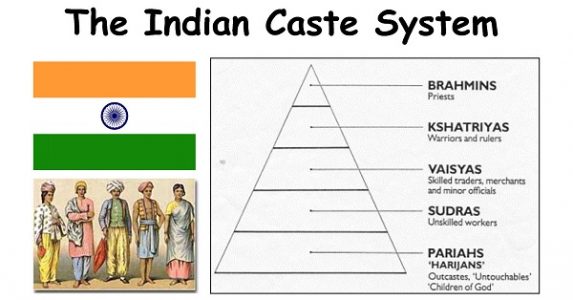
It often labels the candidates “of low intelligence” when the benefitted candidate reveals he had an advantage of reservation. We know writing in favor or against reservation is a difficult task, therefore, we would shed some light on the history of reservation from beginning to the time when India gained its independence and it became a law. From there on we would highlight the progress of reservation in the last 70 years of independent India and the Current Reservation System in India. We would request our readers not to jump to any conclusion until they have read the entire post. Hope we are able to bring out a fair article that would help our readers.
Qucik Navigate:
History of Reservation System in India
The demand for reservation in India dates back to the 19th century with the appointment of Hunter Commission in 1882. Mahatma Jyotirao Phule, a social reformer from the lower caste
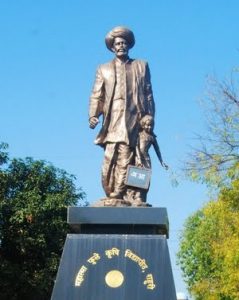
made a demand for free and compulsory education as well as a proportionate representation in government jobs. In 1901 reservations were introduced for the first time in India in the state of Maharashtra (in the Princely State of Kolhapur) by Shahu Maharaj. The provisions of reservation were in favor of non-Brahmins and backward classes. The notification of 1902 created 50% reservation in services for backward classes/communities in the State of Kolhapur. In 1908 reservations were introduced by the name of Indian Councils Act 1909 or Morley-Minto Reforms but the main provisions of these reforms were on religious lines. It aimed to divide the society on a religious basis rather than uplifting the backward communities.
In August 1933, Communal Award introduced separate representations for the Muslims, Sikhs, Christians, Anglo-Indians, Europeans, and Dalit. An important thing to be noted was if the seats were reserved for any community, only people belonging to that community were entitled to vote. Communal Award was opposed by prominent leaders of India while it was supported by leaders of the minority community. To counter this situation Poona Pact was signed, according to which country would have a single Hindu electorate, with seats reserved for Dalits. The term “Scheduled Caste” was first used in the Government of India Act of 1935. In 1942 Congress launched “the Quit India Movement” and in response, the British imprisoned all the prominent leaders of the movement till the time they were engaged in World War II. Dr. Ambedkar supported the British and became a member of the Viceroy’s Executive Council. He used his new position to secure the interest of Scheduled Castes and in 1943 reservation of services in favor of the Scheduled Castes became effective.
Reservation System at the time of Drafting of Constitution
When the Indian Constitution was in the drafting phase there were a lot of discussions on the reservation. Dr. Ambedkar was appointed as the chairman of the Drafting Committee. Congress did not want to commit the same mistake as was done during the British time which granted separate electorate for Muslims and therefore reservations were approved. Some minorities like the Parsis voluntarily gave up this right. India’s first Prime Minister Mr. Jawaharlal Nehru while addressing the Constituent Assembly in May 1949 said “I try to look upon the problem not in the sense of religious minority, but rather in the sense of helping backward groups in the country. I do not look at it from a religious point of view or a caste point of view, but from a caste point of view that a backward class ought to be helped, and I am glad that this reservation will be limited to ten years”. Initially, reservations in Lok Sabha and State Assemblies were set to expire after 10 years but it was extended up to 2010 by successive amendments. By the 95th Amendment of the Indian Constitution in 2010, the reservation for SC’s and ST’s in Lok Sabha and States Assemblies were extended to 2060. It is to be noted that there was no timeline set for reservation in Public Sector jobs/Government jobs and other educational institutions.
Indian Constitution and Reservation System In India
This has been a much-debated topic that reservation violates the provisions of the Indian Constitution, as according to Article 14, 15(1), 16(1) and 16(2) of the constitution it guarantees equality to all. Article 14 says “The State shall not deny to any person equality before the law or the equal protection of the laws within the territory of India.” And the article 16(2) says “No citizen shall, on grounds only of religion, race, caste, sex, descent, place of birth, residence or any of them, be ineligible for, or discriminated against in respect or, any employment or office under the State.” But at the same time article 16(4) says “Nothing in this article shall prevent the State from making any provision for the reservation of appointments or posts in favor of any backward class of citizens which, in the opinion of the State, is not adequately represented in the services under the State.”
Indian Judiciary and Reservation System In India
Indian Judiciary has passed many judgments which were both in favor and against reservation. Right from the implementation of Reservation in India the apex court has monitored and passed judgments, few examples are:
- In 1951, Case of State of Madras Vs. Smt. Champakam Dorairanjan court pronounced that caste-based reservations as per Communal Award violate Article 15(1) but the 1st Constitutional Amendment (Art. 15 (4)) was introduced to make judgment invalid.
- In 1963, Case of M R Balaji vs. Mysore Case the Apex Court put a 50% cap on the reservation, still many Indian States have crossed this limit. Tamil Nadu (69%, under 9th schedule) and Rajasthan (68% quota including 14% for the forward castes, post-Gujjar violence 2008).
- In 1990 Supreme Court held that reservation is applicable in selection method and promotions of Group-A/Class-1 officers up to highest level and the Government of India has committed a mistake by not giving reservation to SC&ST officers.
- In 1992 court-ordered to exclude Creamy Layer of other backward classes from enjoying reservation.
- Declared separate reservations for economically poor among the forward castes as invalid.
- In March 2014, a day before the 2014 Indian General Election, the UPA government included Jats from 9 states in the central OBC quota. The NCBC(National Commission for Backward Caste) stated that this decision was not based on their recommendation. In fact, the NCBC advised against the decision, but the Cabinet rejected this advice arguing that NCBC had not taken into account “the ground realities”.In March 2015, the decision was rejected by the Supreme Court of India.
Indian Parliament and Reservation System In India
Indian Parliament and State Assemblies have passed various acts to increase the influence of reservation. Many politicians/political parties have used “Reservation” as their election manifesto and some even managed to gain success.
- In 1979 Mandal Commission was established to assess the situation of the socially and educationally backward classes. The commission did not have exact figures for Other Backward Class (OBC) and used the 1930 census data. It classified 1,257 communities as backward and estimated the OBC population at 52%. It was on the recommendation of Mandal Commission that reservation went from 22.5% to 49.5%. By the year 2006, 2297 castes were categorized as the backward class, an increase of 60% from the list prepared by Mandal commission.
- In 1995 Indian Parliament added reservations in promotions to the Schedule Castes and Schedule Tribes by 77th Constitutional Amendment.
- In August 1995 Kerala Government passed an Act that stated: “there are no socially advanced sections in any Backward Classes who have acquired the ability to compete with the Forward Classes.” This allowed the existing system of reservations to continue.
- By 81st Constitutional Amendment in 2000, provisions were added that Reserved Posts will be considered a separate class of vacancies to be filled in succeeding years and this class of vacancies shall not be considered together with the vacancies of the year that were being filled up for the purpose of determining the 50 percent ceiling.
- In 2000, 82nd Constitutional Amendment stated “relaxation in qualifying marks or lowering standards of evaluation“. 93rd Constitutional Amendment made provisions for “advancement of any socially and educationally backward classes of citizens”, including their admission in aided or unaided private educational institutions. Gradually this reservation policy is to be implemented in private institutions.
Status of Reservation in the States of India
Supreme Court of India has already made it clear that no state should pass the 50% barrier in the reservation and in past it reminded the state to follow its guidelines. Despite warning from apex court many times different state governments have tried to cross this limit. Two Indian states (Tamil Nadu & Rajasthan) have already crossed this limit. Most of the time false promises are being made during the election to generate vote bank even though the MP’s and MLA’s know that the implementation is not possible according to the constitution of India. Here is the status of reservation in various Indian states and instances when they tried to cross the 50% cap.
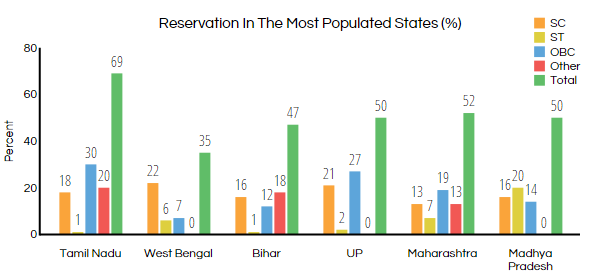
- In 2007 UP government under Mayawati proposed reservation in promotions but Allahabad High Court struck down the policy terming it as unconstitutional.
- The government of Maharashtra added Marathas (16%) and some Muslims (5%) to the reservation in 2014 but the move was rejected by Bombay High Court later.
- Indian Government announced a sub-quota of 4.5% for minorities (Muslim Community) just before the U.P election but it was struck down by the Election Commission of India.
- Andhra Pradesh Government introduced 4% reservations for Muslims in 2004 but it was quashed by Andhra Pradesh High Court.
- Kerala Public Service Commission has provided a reservation of 12% for Muslims.
- The state of Tamil Nadu managed to provide a 69% reservation without excluding the creamy layer. The same was included in the 9th schedule of the Indian Constitution making it hard for the court to review as the judiciary has restricted access.
This concludes our first article about the overview of the Reservation System in India and how it has been changed from time to time. The current reservation system in India comprises of 7.5% reservation for people belonging to Schedule Tribe (S.T), a 15% reservation for people belonging to Schedule Caste (S.C) and 27% for people belonging to Other Backward Caste. This is to be followed by all central government jobs and educational policies. When it comes to state governments some states provide reservations for female candidates, armed force candidate and freedom fighters. In the next article, we would be covering the Progress made by Reservation System in India, why it is criticized by other communities, recent agitation by various communities seeking reservation and our views about how to make this policy robust.

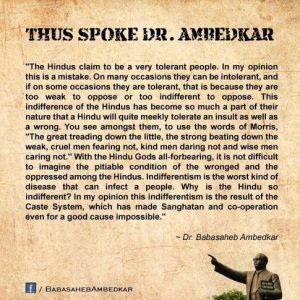
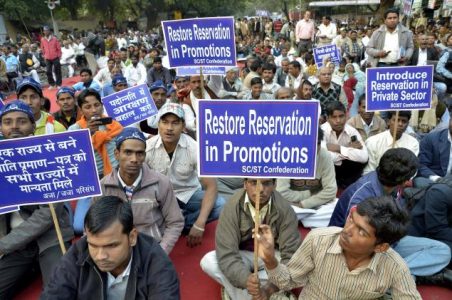
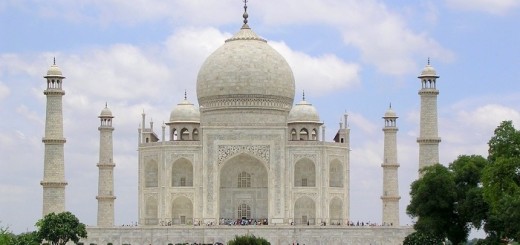
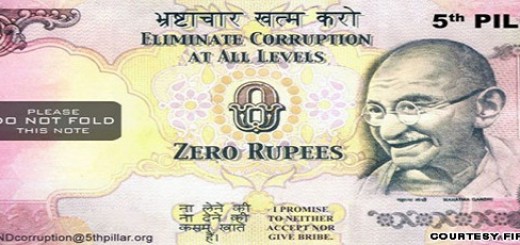
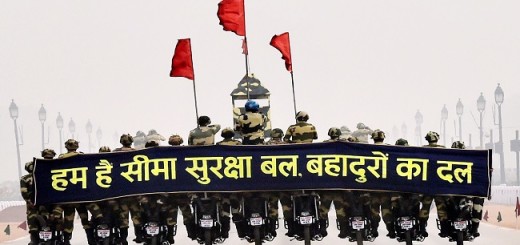

Very awesome and useful content! Appreciate you for making the effort! ~Sat Nam